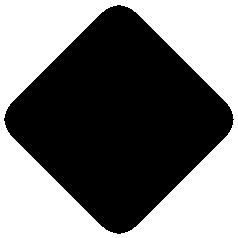6 minute read
Steering & Suspension
Next Article
Taking the strain

Few components are exposed to harsher conditions than those fitted to the suspension, leading Rob Marshall to give an overview about how and why some parts wear faster than others
Perhaps the simplest and most common joint, used in suspension and steering systems, is the humble ball and socket, known otherwise as a Ball Joint. It comprises a circular ball that rotates within a lubricated socket housing, enclosed and protected by a tightly secured boot, or dust cover. MOOG reports that natural wear symptoms result from the ball pin becoming loose in its housing, resulting in a knocking noise. This is down to high axial and radial supported loads from typical use (from accelerating to cornering), causing natural wear of the socket that, being plastic, tends to wear faster than the ball. First Line explains that other suspension parts share the same ball pin/housing design and, consequently, technicians will see many different variations. MOOG adds that, in use, lower ball joints face the highest forces. This is why they are always oversized, compared to track-rod ends, or antiroll bar/drop links, for example, to make their lifespan similar to that of other ball joints within the suspension system. ZF Aftermarket (under its Lemförder and TRW brands) reminds us that even ball joints should be replaced in axle sets.
The fight that some suspension components put up against the technician is a testament to the harsh conditions that they must endure, when fitted
APPROVED BY THE EXPERTS
Schaeffler is renowned as a supplier of high-tech precision components and systems to leading vehicle manufacturers around the world.
We have used this engineering excellence and OE know-how to create the FAG steering and suspension range, which offers a genuine quality alternative to independent workshops. Every single part has been designed, tested and approved to stringent OE specifications by our own engineers, before being produced using the very latest exacting Schaeffler material and manufacturing quality standards. FAG steering & suspension components also feature a market leading zinc-flake coating, wear and corrosion clear TPU boots, and are supplied with all the genuine OE ancillaries needed for a professional repair.
FAG. The chassis experts.
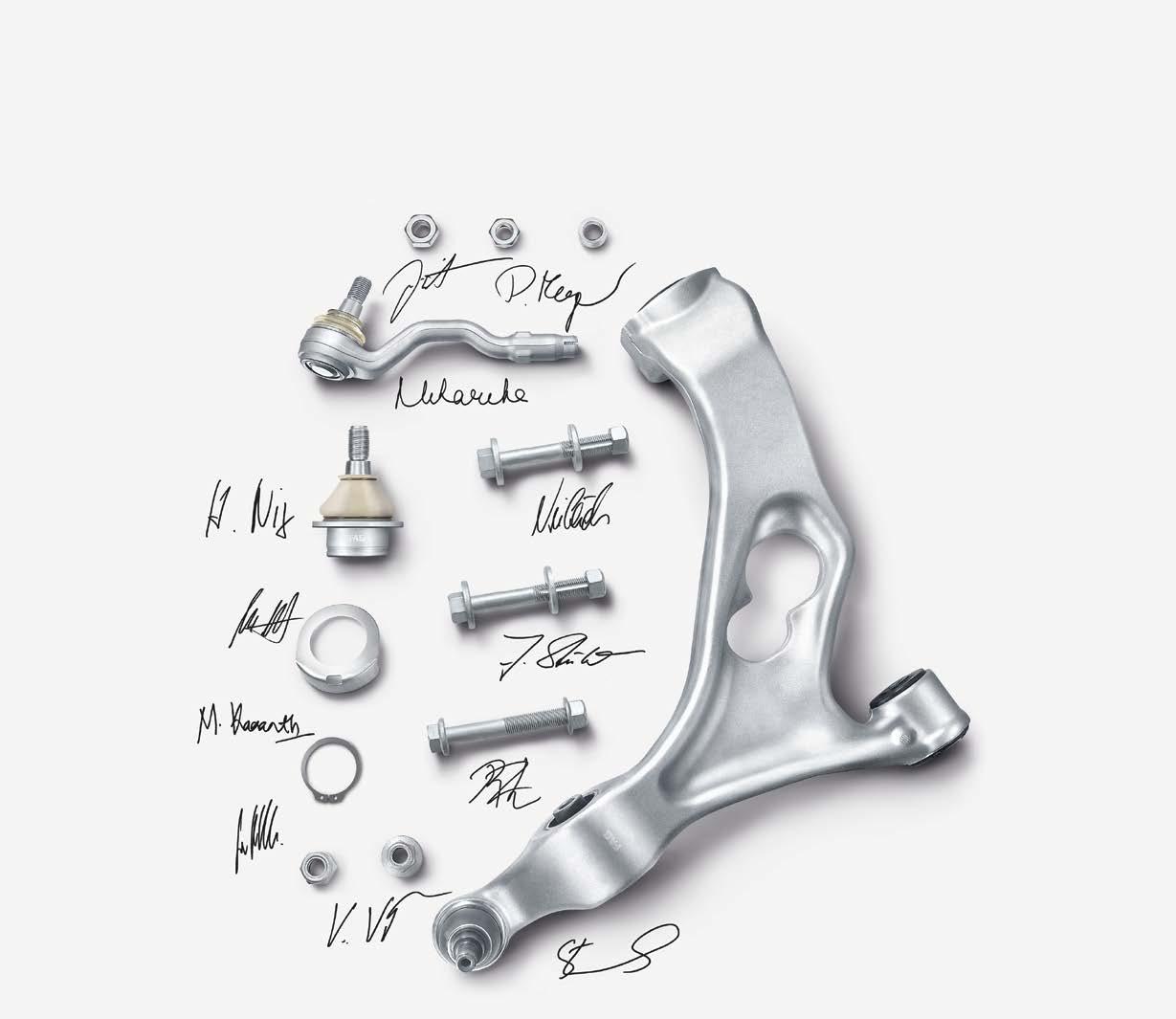

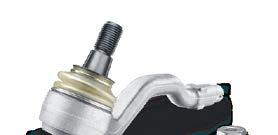
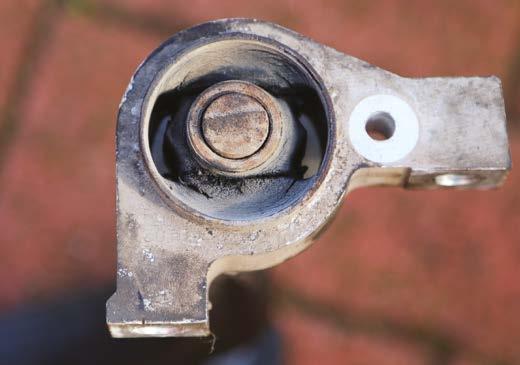
Unsurprisingly, quality aftermarket manufacturers have sought to improve the original parts that wear at a comparatively fast rate. AT readers will be familiar with the MEYLE-HD range, where a specific enhancement is a larger ball pin diameter, which distributes forces over a larger surface area, plus a harder plastic used in the ball seat socket, making it more resistant to friction and even abrasion. First Line's Heavy Duty range also features larger ball pins and enhanced ball seat materials. The company has focussed its range for common models that are used commercially, such as taxis, or hire cars, in addition to offroad vehicles.
Bushes
ZF Aftermarket advises that bushes have a hard life, too. Residing beneath the car, their natural rubber construction must resist temperature changes, extreme forces, movement, dirt, salt, and water. Over time, they become brittle, as the rubber loses its flexibility, the results of which, according to the bilstein group, are splits and tears. First Line adds that the consequences are poor handling and vibration, although poor tyre wear and clunking can also be symptoms. ZF advises that, because bush wear tends to be a gradual process, issues tend to be found during the MOT Test rather than a driver experiencing a sudden failure symptom. This explains why deteriorated bushes are one of the most frequent MOT advisory points. Due to their essential roles, many different types of bushes are employed, from hydro-elastic to slotted designs. While the wear characteristics remain similar, the fitting techniques differ considerably and so AT plans to cover bushes in greater depth, in a future feature.
Upgraded bushes are one of the most well-known modifications, although some types for motorsport use introduce significant compromises. They can even be harmful. The bilstein group told us that, in the example of replacing a hydraulic suspension bush with a solid alternative, noise, vibration and harshness can result and it may even put extra stress on associated components.
"ZF advises that, because bush wear tends to be a gradual process, issues tend to be found during the MOT test rather than a driver experiencing a sudden failure symptom."
Dampers
While the MOT inspection for major leaks remains relevant and important, it is surprising that more checks are not specified by the DVSA, considering how intrinsic they are for keeping the tyres in firm contact with the road surface. With just a single worn damper, the stopping distance from 30mph increases by two metres. The traditional 'bounce' test, for example, has been obsolete for around a decade and no assessment is mandatory to deduce how dampening properties alter with time, especially as a worn damper can give no external clue.
KYB reports that a number of carefully calibrated valves reside within a typical damper, each one of which possesses a stack of small compression discs (pictured), less than 1mm thick.
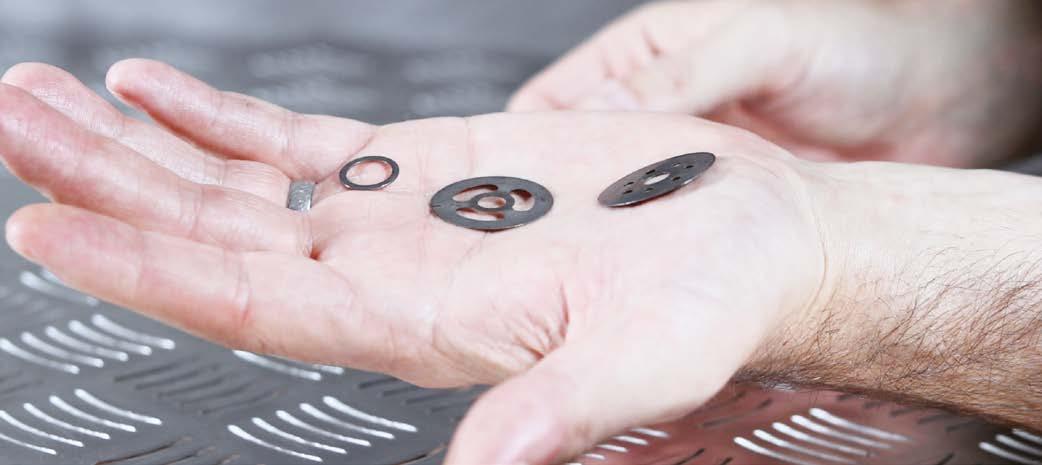
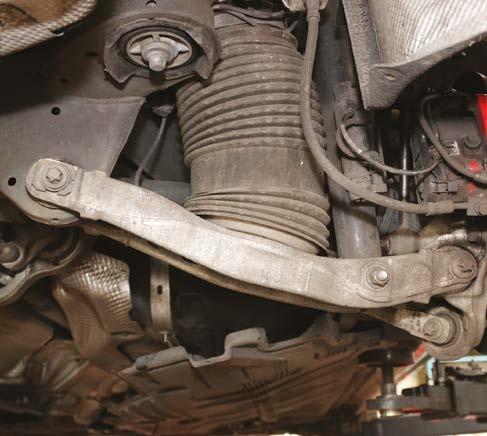
During compression, oil is forced through each of these valves and it is this situation that provides the damping property. By the time a car reaches KYB's recommended damper replacement interval of 50,000 miles, fluid has passed through these valves over 75 million times.
Ancillary parts that are associated with the damper also possess a similar lifespan and these should be replaced at the same as the damper. Springs also wear naturally, although KYB attributes higher vehicle weights, lighter coil spring designs (with different shapes and wire diameters), speed calming measures, and worsening road surface quality as reasons why breakages have become more common. As with dampers (and many other parts of the suspension system), springs must be replaced in axle pairs.
Air suspension
Fitted to an increasing number of vehicles, air suspension incorporates a rubber air bellow that acts as the spring. As with bushes, the natural rubber used does not last indefinitely, which is why Arnott reports that air springs are the first component that exhibit wear. As the rubber dries and loses flexibility, small cracks from where the air bladder rolls upon itself and air leaks out. For a complete strut assembly, oil can also escape and the lubricant will hasten the air spring's rubber's degradation, should it make contact.
Leaking air springs also make the compressor work more frequently. As most of them are designed only for shortterm use, they do not tolerate the increased demand. The resultant high temperatures, which can exceed 100- degrees Celsius, can make them overheat. This situation can also prevent the valve block from operating as well. Therefore, not replacing air springs in good time is a false economy.
LKQ Euro Car Parts highlights that, while air suspension springs require replacing every six to ten years, a long period of idleness increases thechances of failure. This is something to consider if you know that a vehicle has been standing for long periods during the various lockdowns.



